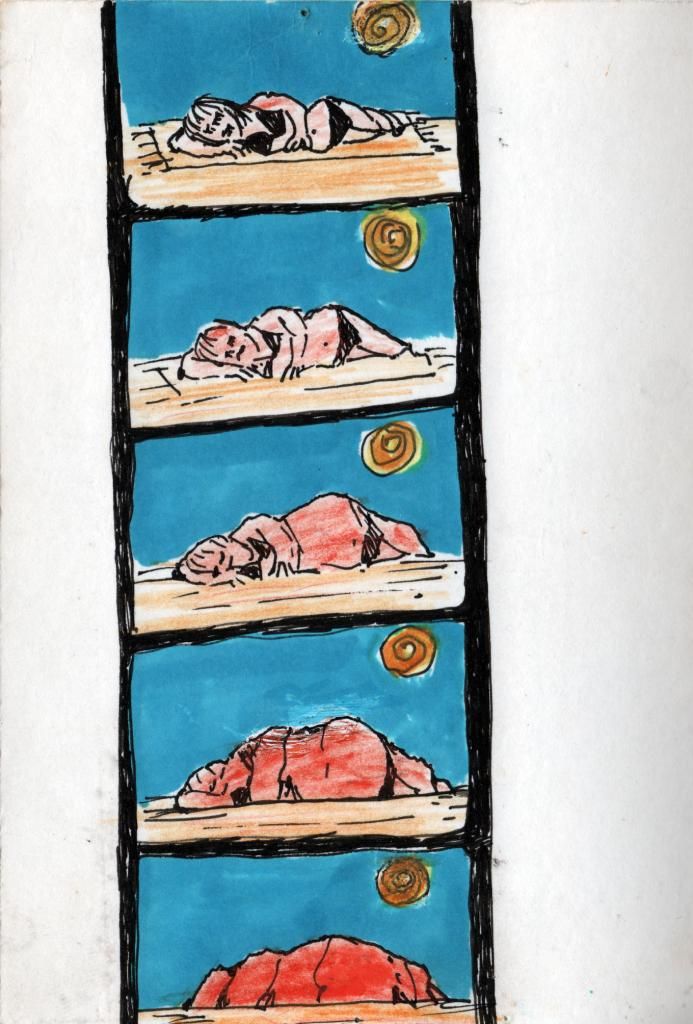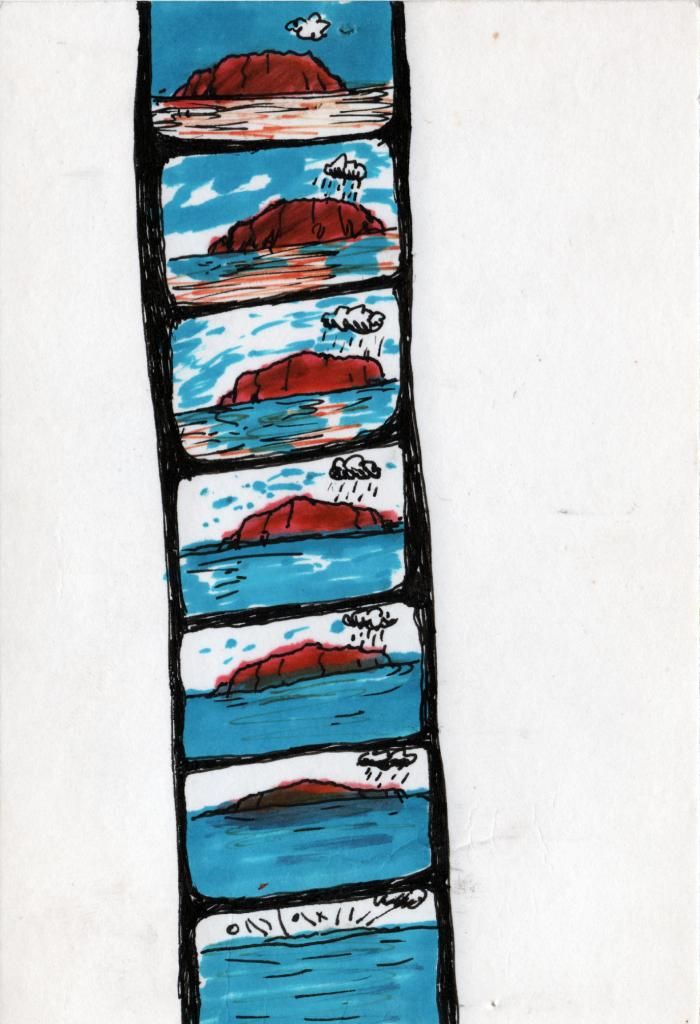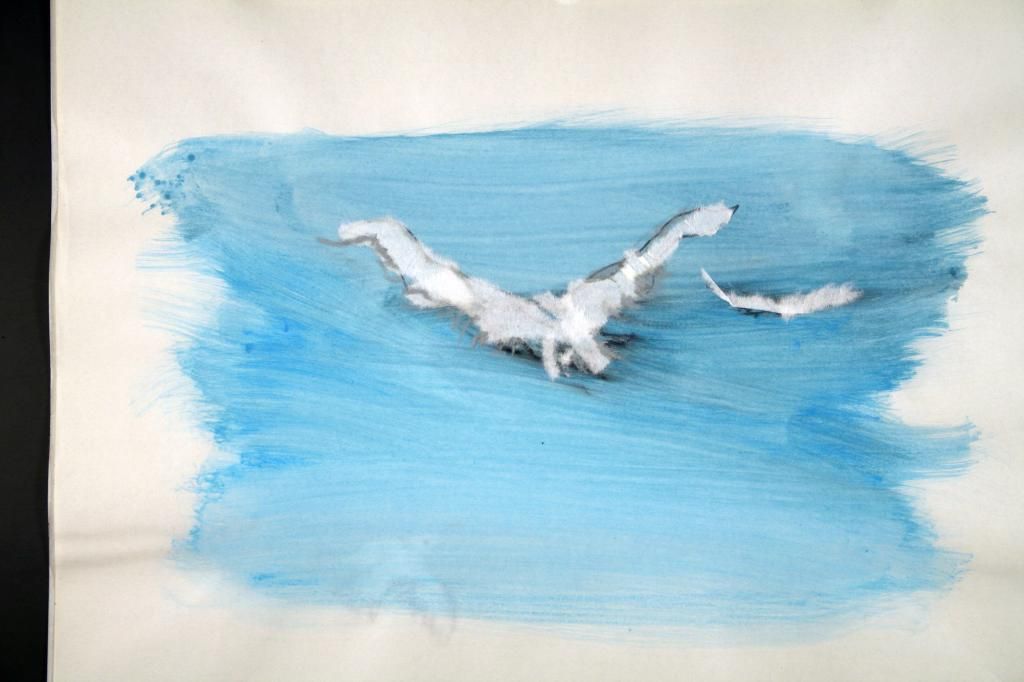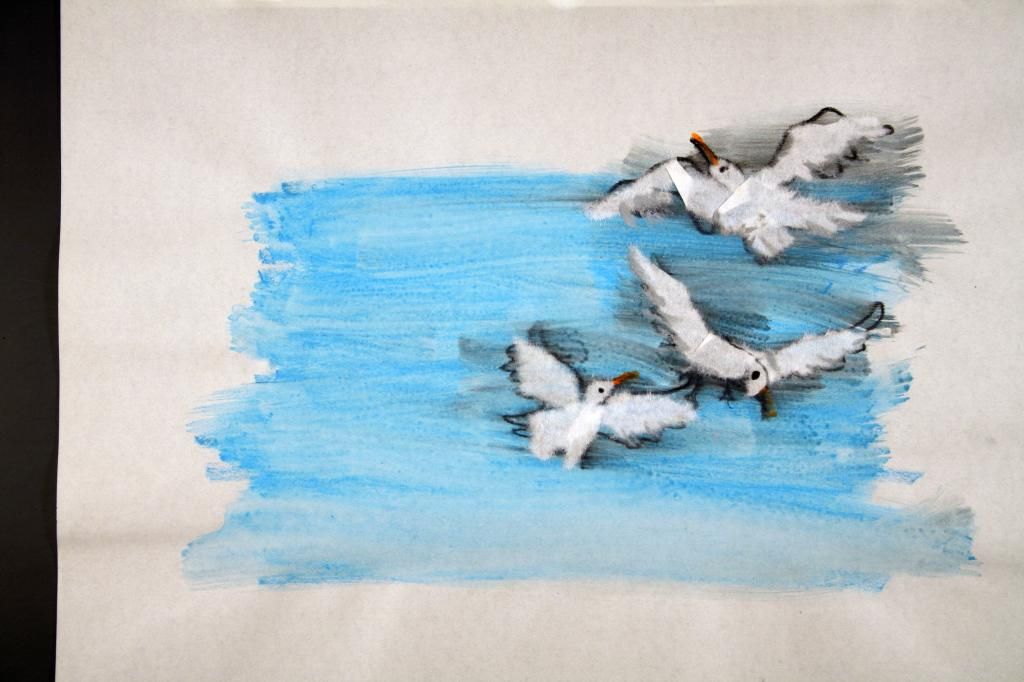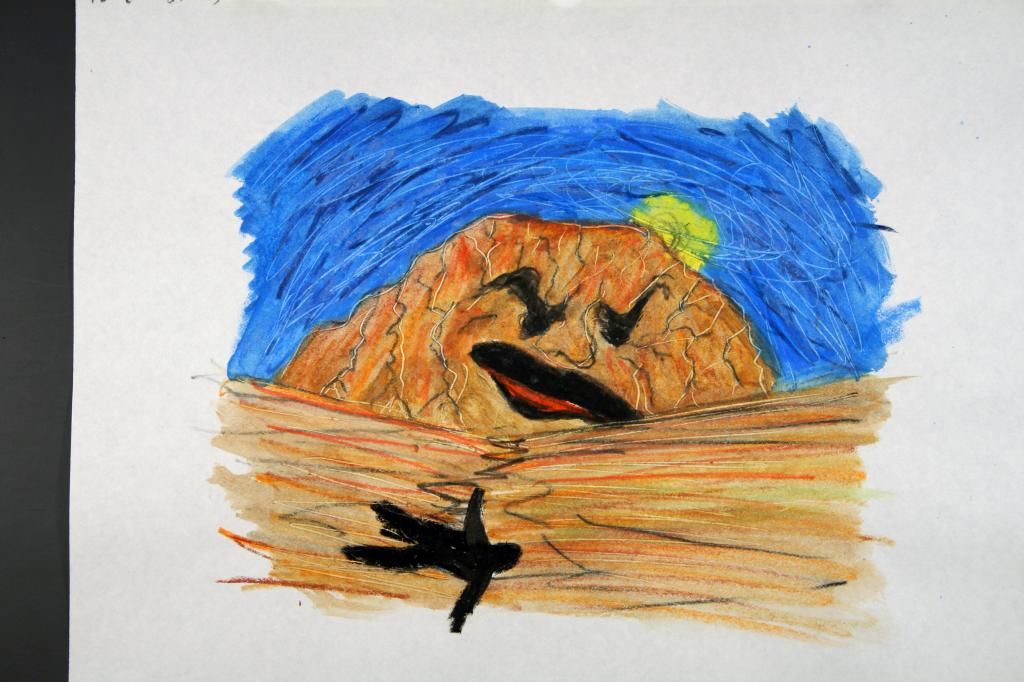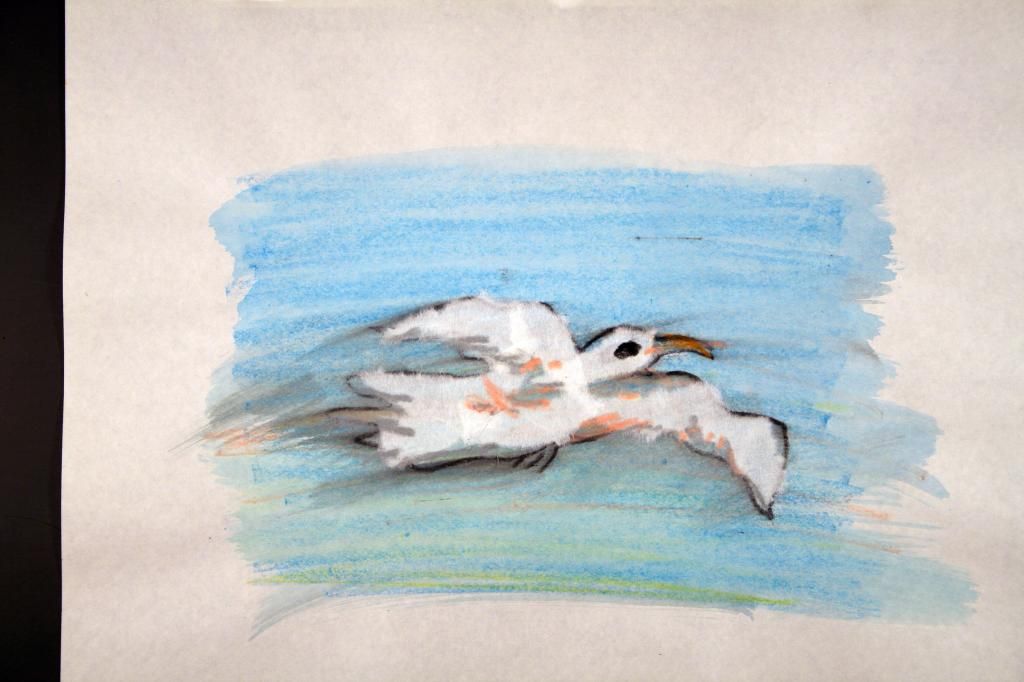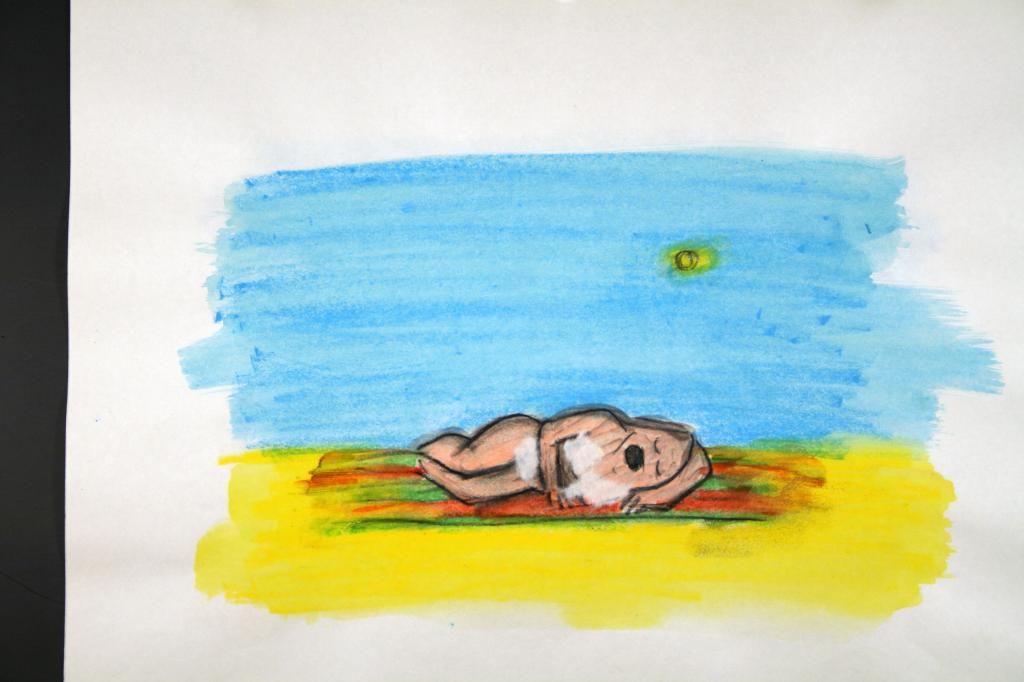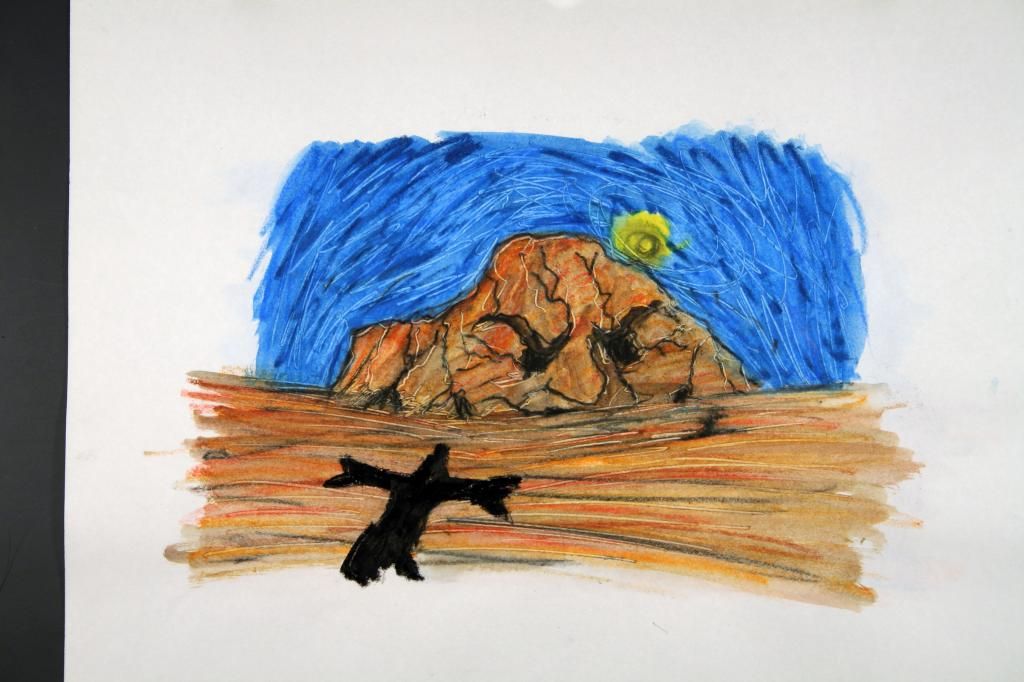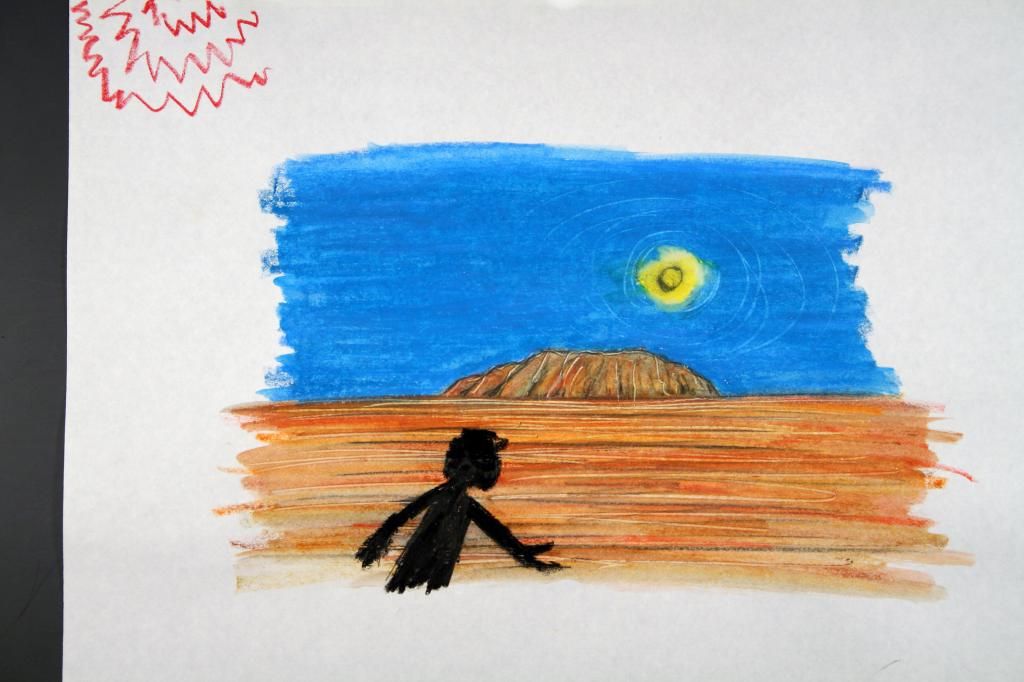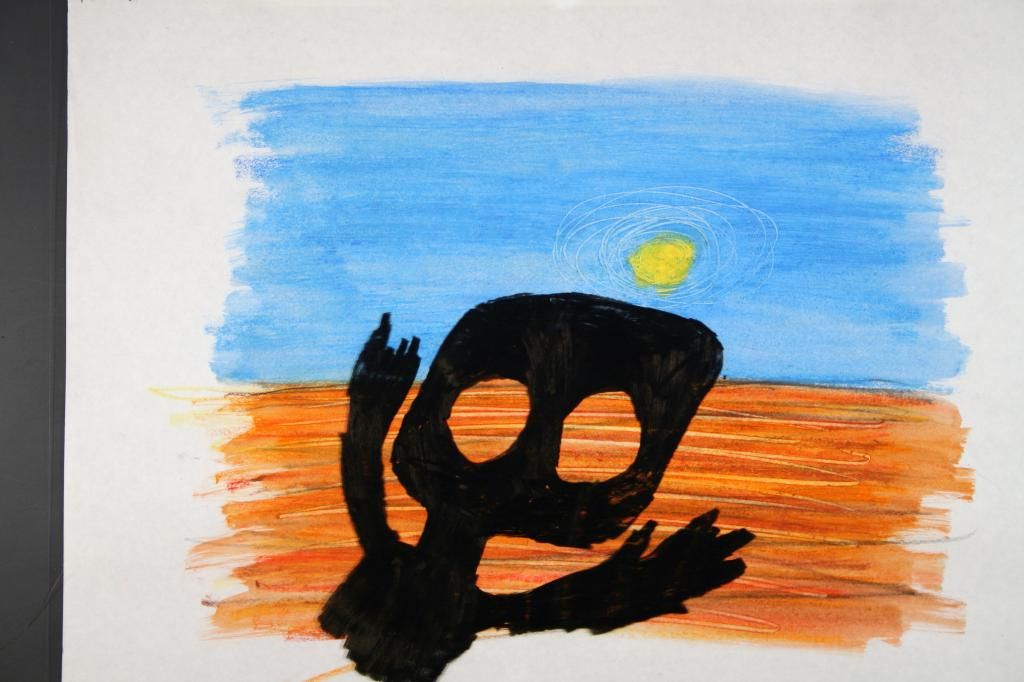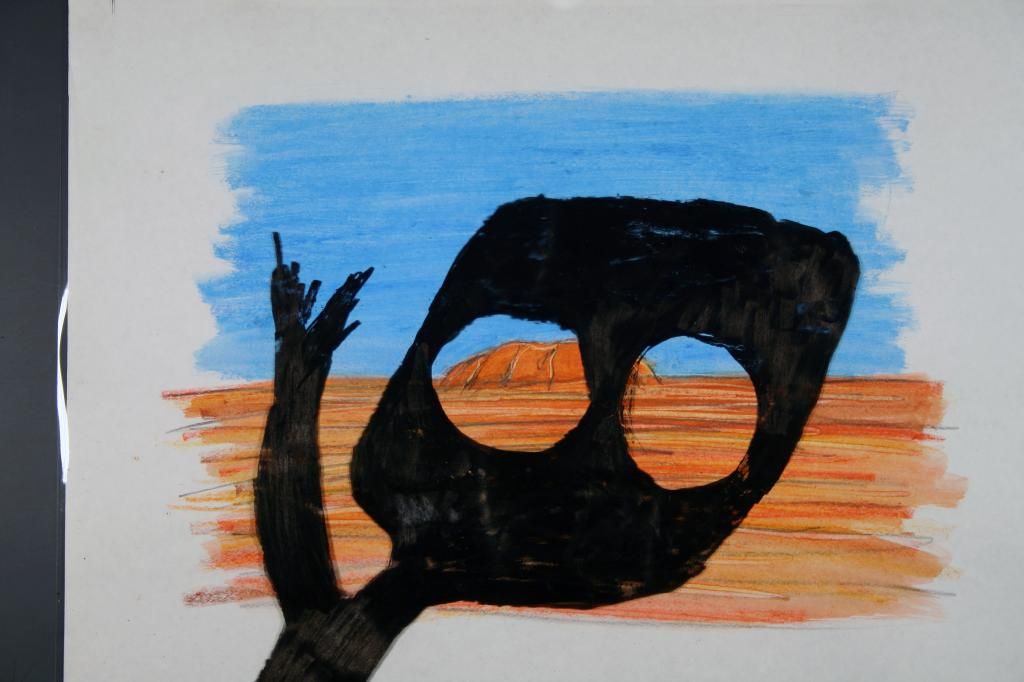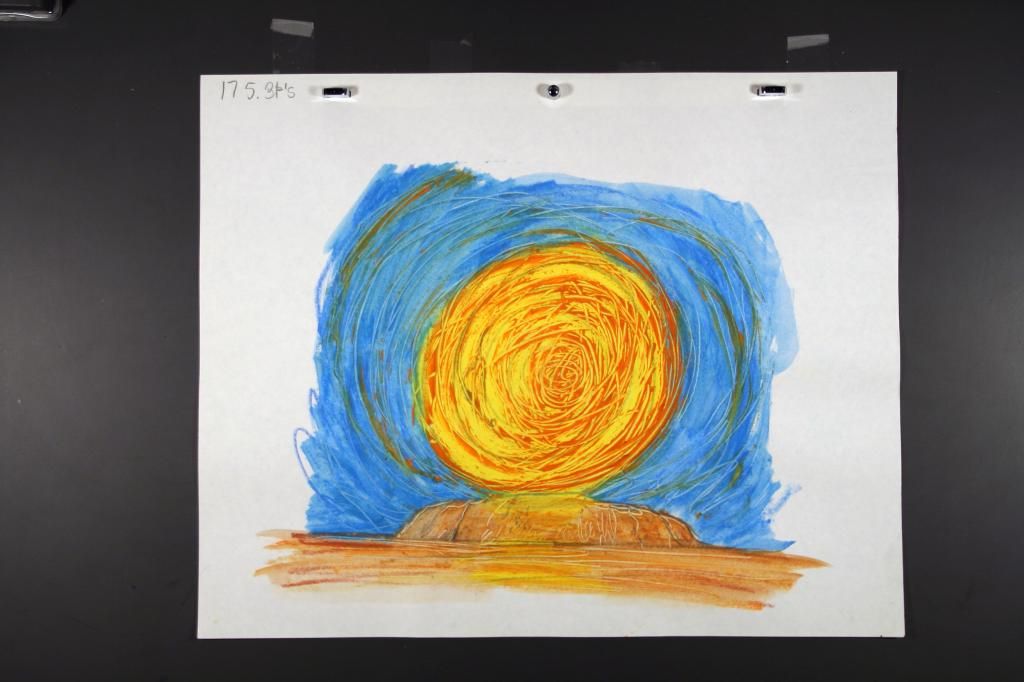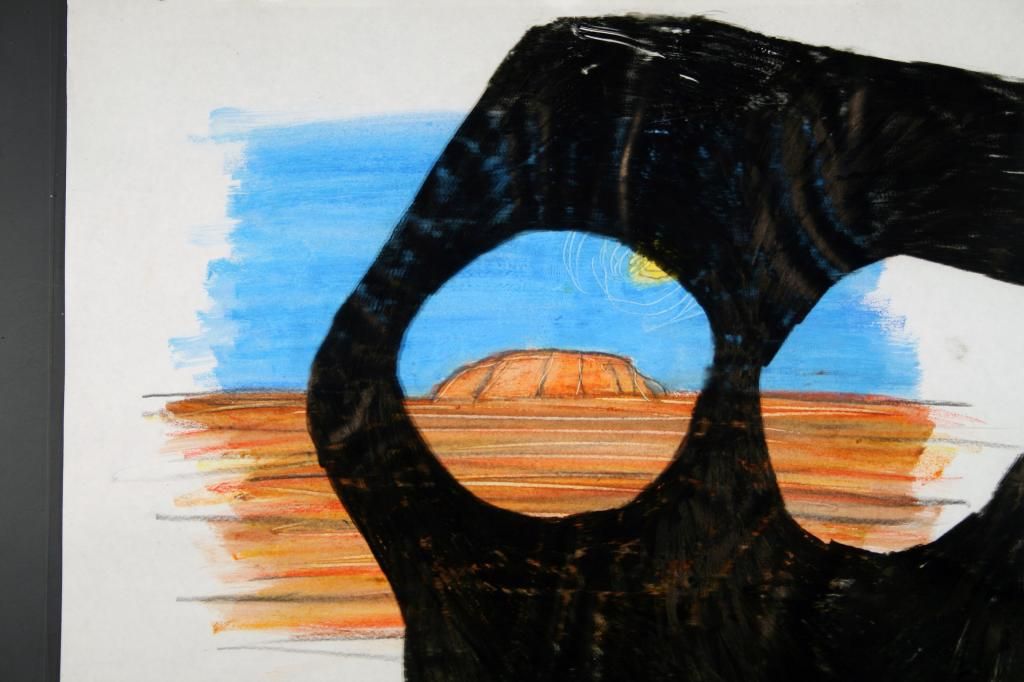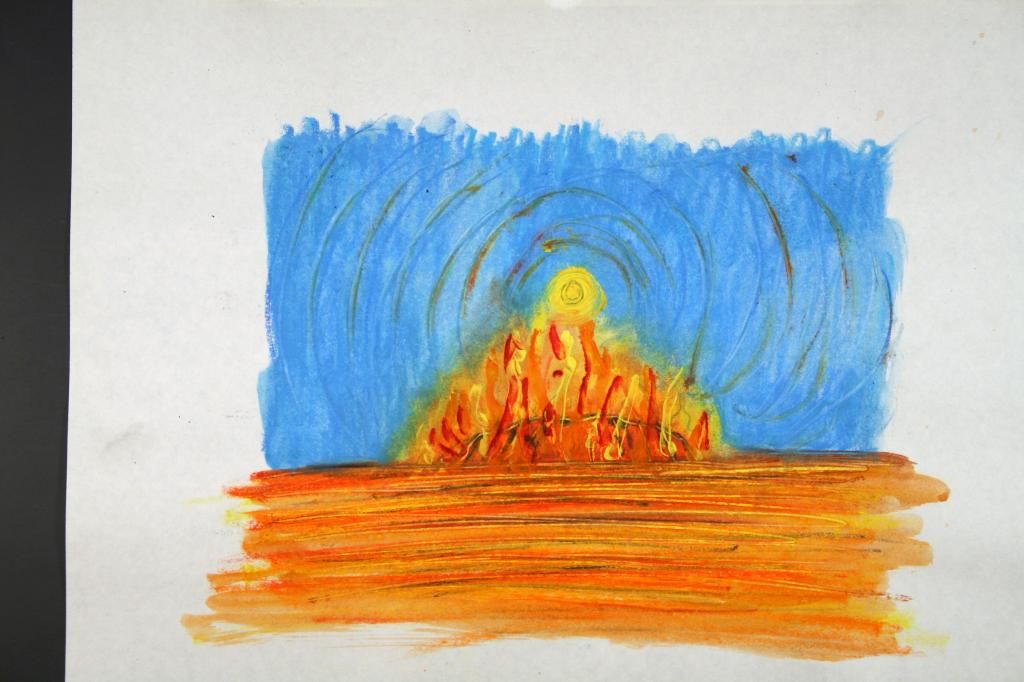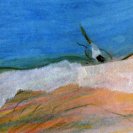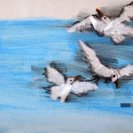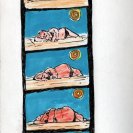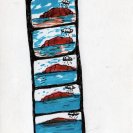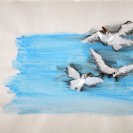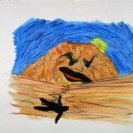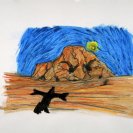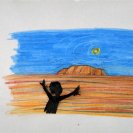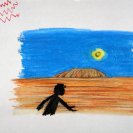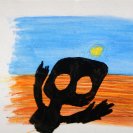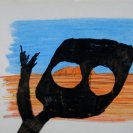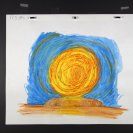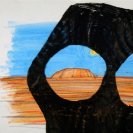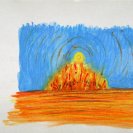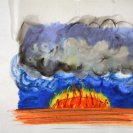Artist statement from Kathy Smith, September 2013:
"As a painter I have always been interested in communicating more than just a static image. The mental and conceptual process of painting is something that I have always tried to convey through the exhibition format itself. When exhibiting my work in an installation, I incorporate sound into the exhibition space; additionally, I construct collage maps to show how the images evolved and fitted together sequentially. The discovery of animation was a revelation for me: for the first time I could convey the internal thought processes of painting and drawing through a temporal medium.
On its own, painting can define a concept by composition, color, and layering. What has always fascinated me about animation is its potential to capture or provoke a thought via kinetic energy and sound. Animation, by its very nature, adds another dimension to painting by adding temporal, spatial, and aural movement and space to static images.
Constantly moving, animation allows the viewer to become part of an artwork’s creation. The brushstrokes, shapes, and ideas are seen, passed by, and arrived at, - an animated film concretizes the thought process that creates a static work by incorporating the physical senses of movement and sound.
In 1985, I created Ayers Rock, based upon a series of postcard images I developed about the rock. My intention for this animation was to create a series of surreal events morphing from one sequence into the next.
I was also influenced by the works of Australian painter Sidney Nolan, particularly his Ned Kelly series depicting the Bush Ranger in black led armor with the landscape appearing through the slit in his helmet.
This approach to perspective, unique to painting and surrealist imagery, had always fascinated me and I wanted to transpose these concepts to animation. I also wanted to paint each image individually to enhance the texture of the landscape and create a flickering, constantly changing environment that actually seems to breathe.
Through Ayers Rock I learned a way to combine and re-use my painting and drawing in a collage and re-arrangement process that I would then draw out into image-movements, a term I coined to describe a type of storyboarding. My image-movements differ from storyboards in that the sequential movement or narrative is not driven by a descriptive text or storyline, but by the images themselves. The arrangement of visual elements flowing into, or connecting with, new images presents surprising, dream-like narratives. After creating the image movement, I then describe the visual detail in writing. I also describe the individual sounds that may accompany the images at this point; this allows me to design and develop a soundtrack that in turn determines the animation’s timing.
Ayers Rock went on to be exhibited at the Sydney Super-8 Film Festival and then toured internationally with several curated programs by Mark Titmarsh. It was purchased for collection by the Australian National Gallery Canberra and is part of the Australian Sound & Film Archive Collection.
Ayers Rock -1985 Watercolour, collage, tissue paper, acetate, tracing paper and pencil on standard animation paper. Total artwork 398 images - running time approximately 50 seconds."
Creative Process - optional historical notes from the artist
"Ayers Rock was originally shot on Super-8 film in early 1985 at Sydney College of the Arts -Visual Communication Design Department where I was a student. It was re-filmed on 35mm in 1993 at Film Australia and sound synced at AFTRS in the same year. I wanted to create a metamorphosis of the Australian landscape from sunbather to Uluru; therefore I back-lit the art work to intensify the flickering animation and feeling of heat in the images. Each image was hand painted on standard animation paper with water colour using elements of collage, tracing paper for the storm, and some cell to overlay the rain.
At that time I was also painting images of beaches, rock pools, seagulls and developing postcard sequences (see additional reference images and the actual Ayers Rock Animation artwork). Part of the reason I became fascinated with the rock was from listening to stories by my nephew who had taken a journey there, it was still referred to as Ayers Rock in 1985 not it's Aboriginal name -Uluru. Steven told me about the numerous American tourists visiting the site and how everyone wanted to climb the rock - which he disagreed with.
I initially created a series of postcard images about the rock and then developed this short animation, as with all my works I created a soundtrack first and simply mixed it at Sydney College of the Arts-SCA (with the help of James Kesteven) on 1/4" tape which was then transferred to cassette tape then hand synced literally to Super-8 mag on an Elmo projector.
I used to film the artwork on a Canon Super-8 camera from SCA with a simple tripod and one red-head light (this was also shot over a light box for back lighting) then waited for the AGFA Mag film to come back and I would hand sync by pressing the record on the sound button of the projector to sync to the running animation on the Elmo projector. It was trial and error until I got the syncing right, I used to use a stop watch to work out 24 frames per second breakdown of the soundtrack for art work creation, we were not a film school -so no Oxberry cameras or steenbecks! It was low tech but full of initiative and innovation at SCA in those days.
As you know this was our independent medium of the day, the first Oxberry I got to use was with Change if Place it was a 16mm Oxberry being neglected at University of NSW, in fact when I went to shoot on that camera I found that someome had draped their swimmers on it to dry! Here we were at SCA trying to make all these animations with raw set-up and this Oxberry was being used as a clothes lines at UNSW! Criminal!"
